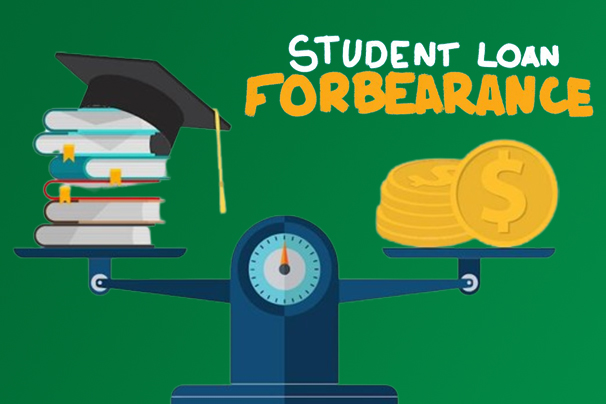Student loan forbearance is a form of contract where your lender permits you to temporarily stop or decrease your monthly payments. Moreover, securing student loan forbearance grants you the opportunity to delay repayment if your circumstances or financial situation make it challenging. Furthermore, you will make fewer or no payments, but it won’t contribute to reducing your overall education debt during forbearance.

Additionally, interest persists and increases during this period. When your loans exit forbearance, the interest earned will be added to the loan’s principal, a process called interest capitalization. Lastly, your interest charges will be calculated based on the increased balance.
How Does It Work?
Federal student loan forbearance programs delay usual payments for 12 months. Upon the end of this period, you can select to reapply for forbearance if needed.
Moreover, Perkins loans have a maximum lifetime forbearance limit of three years. However, for other federal loans, the cumulative forbearance limit depends on your loan servicer’s decision.
For private student loans, forbearance options are accessible in certain situations. Also, these hardship options do not abide by the regulations of the federal forbearance program.
However, private lenders offer forbearance in their decisions, establishing their requirements and timeframe for these programs.
Types of Student Loan Forbearance
The federal student loan forbearance is associated with two types; each loan has a few variations. However, these loans share the same objective of temporarily suspending your student loan payments for up to 12 months at a time.
General Forbearance
General forbearance, also known as discretionary forbearance, is subject to approval by the entity that owns your loan. If the loan is approved, you can postpone payments for up to 12 months and must reapply after the period.
However, it’s important to note that the total duration of general forbearance is limited to three years. Additionally, you may qualify for general forbearance if you’re experiencing any of the following circumstances:
- Financial hardship
- Medical costs
- Adjustment in employment
- Other circumstances, which will be assessed by your loan owner
Lastly, only direct loans, federal family education loans, and Perkins loans are the types of loans that are qualified for general forbearance.
Mandatory Forbearance
Mandatory forbearance is a more simple process. However, if you fulfill any of the eligibility criteria, the federal government is required to grant you forbearance. You may qualify for mandatory forbearance if:
- Your monthly student loan payment equals 20% or more of your monthly gross income.
- You are serving in AmeriCorps.
- You are enrolled in a medical or dental internship or residency.
- You may be eligible for loan repayment through the U.S. Department of Defense Student Loan Repayment Program.
- You’re a member of the National Guard and have been called up by a governor without eligibility for a military deferment.
- You are a teacher offering a service that qualifies for teacher loan forgiveness.
Mandatory forbearance is available for direct loans and federal family education loans. Perkins Loans also qualify for mandatory forbearance if your monthly student loan payment equals 20% or more of your monthly gross income.
Advantages and Disadvantages of Student Loan Forbearance
Like other financial systems, student loan forbearance presents both advantages and disadvantages. For instance, if you’re facing the prospect of wage garnishment or the loss of an income tax refund, choosing forbearance is the right choice.
Advantages
Temporary financial relief
When you stop your loan payments temporarily, it enables you to allocate your resources toward other essential financial needs.
Assists in Avoiding Delinquency or Default
Student loan delinquency and default can result in debt collection, wage garnishment, credit damage, and other adverse consequences. Additionally, your lender or servicer temporarily suspends your required payments during forbearance, preventing penalties for missed payments.
Safeguards Your Credit Score
Defaulting on student loans can significantly lower your credit score. Forbearance usually doesn’t affect your credit score negatively if you don’t make payments during the period. But it’s a temporary solution, and interest might keep accruing. So, before deciding whether forbearance is right for you, consider the pros and cons carefully.
Disadvantages
Temporary Solution
Federal student loan forbearance is granted for 12 months per request, while the duration of private loan forbearance varies depending on the lender. If you require forbearance beyond the initial period, you must apply again. However, there are overall limits in place.
Servicer Discretion
If your forbearance mandate does not fulfill the criteria for mandatory forbearance, your loan servicer may choose to approve or deny it based on your circumstances. Similarly, private lenders have the authority to reject forbearance requests at their will.
No Credit Towards Loan Forgiveness
Forbearance payments do not count towards the required number of payments for federal student loan forgiveness programs.
Forbearance offers temporary relief, allowing you to cover important expenses like housing and utilities. However, relying on it as a long-term solution by continuously renewing your status can be costly.
This approach may lead to loan default or more severe consequences, potentially causing significant damage to your credit score.
Conclusion
Student loan forbearance is typically considered a last option rather than a first option. Moreover, it should be utilized if you require temporary relief and do not qualify for deferment.
